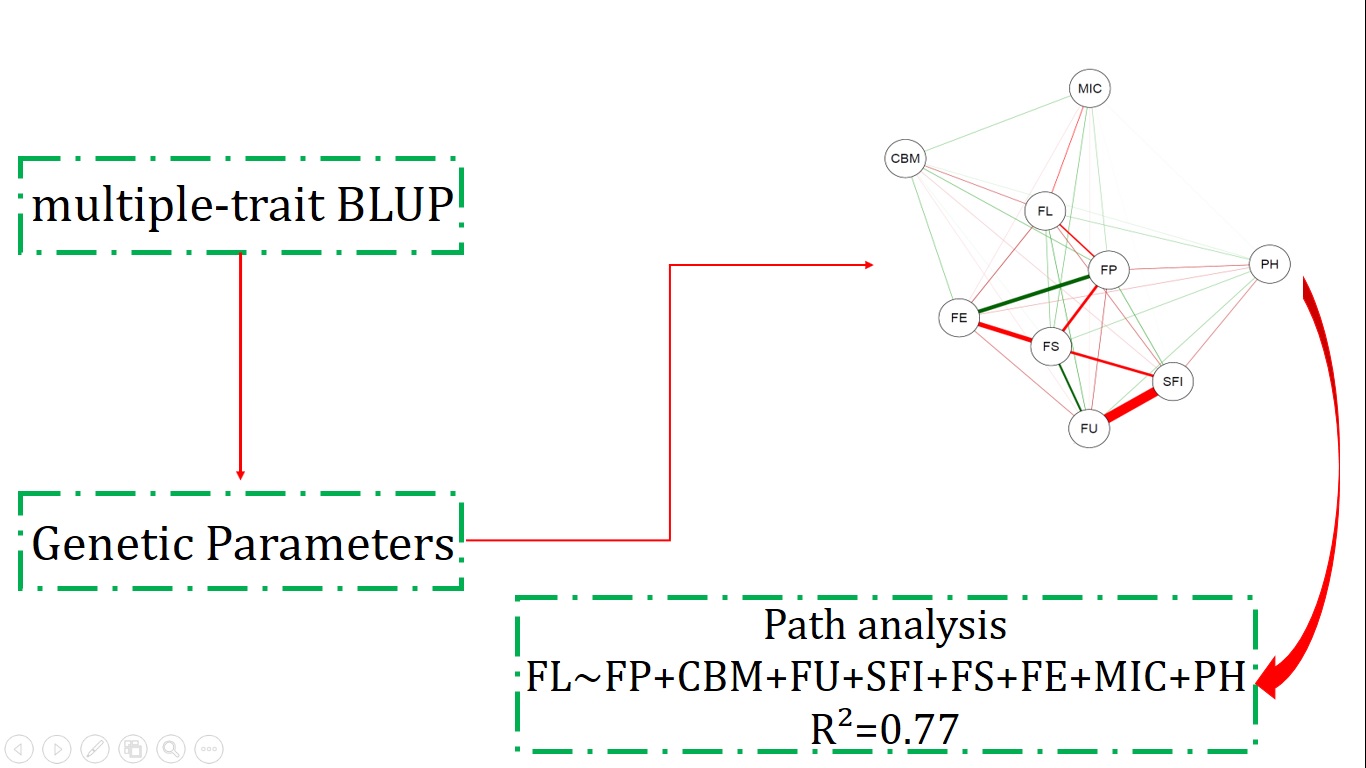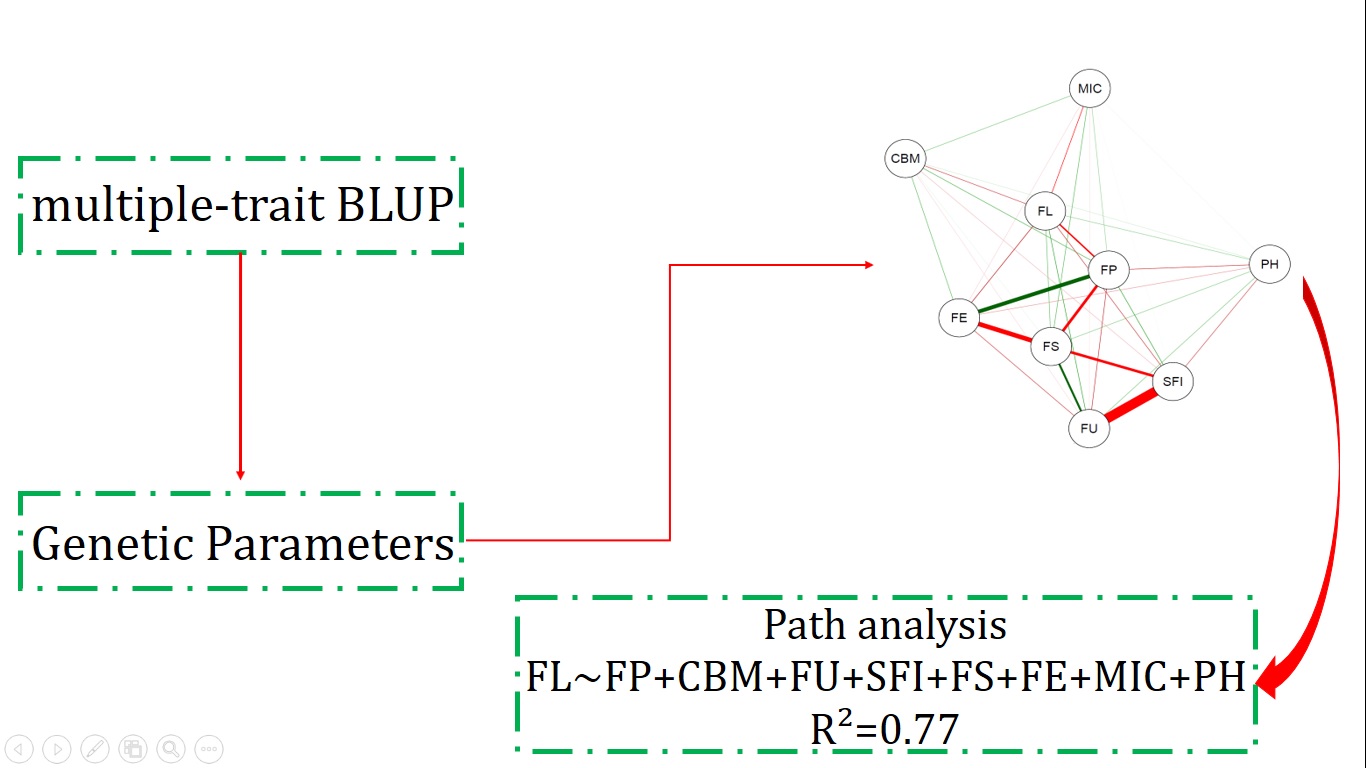Path analysis under multiple-trait BLUP: application in the study of interrelationships among traits related to cotton fiber length
DOI:
https://doi.org/10.48162/rev.39.001Keywords:
Modelo mixto, genotipo x ambiente, correlación genética, selección genética, Gossypium hirsutumAbstract

Multi-trait best linear unbiased prediction (BLUP) is, generally, the most appropriate method to genetic evaluation because it considers the genetic and residual correlations among traits and conduct to higher selection accuracy. Thus, the present study aimed to identify traits correlated to the fiber length via path analysis under multi-trait BLUP for the cotton breeding. To this end, thirty-six elite lines were evaluated in three environments and phenotyped for many traits related to fiber quality and agronomic traits. Variance components were estimated via residual maximum likelihood (REML). The genetic correlation coefficients among traits were obtained through mixed model output, and to graphically express these results a correlation network was built. Subsequently, we performed path analysis considering fiber length as a principal dependent variable. Genetic parameters obtained by multi-trait BLUP model indicate that the phenotypic variance for most traits is mostly composed of residual effects, which reinforces the need for using more accurate statistical methods such as multi-trait BLUP. The results found for genetic correlations and path analysis under multi-trait BLUP reveal the difficulty of selection based on important fiber quality traits, especially fiber length, since most traits show very low cause-and-effect relationship, and other important traits present undesirable cause-and-effect relationship.
Highlights
- Multiple-trait BLUP is the most appropriate method to predict genetic values.
- This is the first study in cotton to perform path analysis under multiple-trait BLUP.
- The findings of this study indicate that there is no genotype presenting all desirable traits.
Downloads

Downloads
Published
How to Cite
Issue
Section
License
Copyright (c) 2021 Revista de la Facultad de Ciencias Agrarias UNCuyo

This work is licensed under a Creative Commons Attribution-NonCommercial-ShareAlike 3.0 Unported License.
Aquellos autores/as que tengan publicaciones con esta revista, aceptan las Políticas Editoriales.










.jpg)




